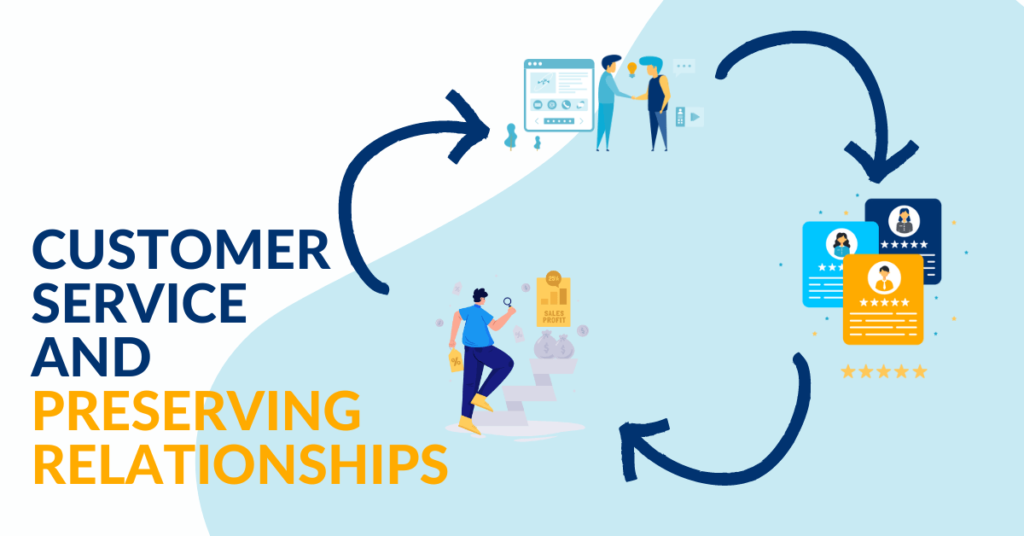Service-based business activities are the physical processes you and your company will use to run daily operations. These tasks are required to prepare a business to survive, thrive, and compete within the industry. This article identifies five business activities you should follow to help your business grow. Are you ready to get started? Let’s go then!
1. The Offering
According to Harvard Business Review, the challenge of service-based business activities and management begins with design.
As with product companies, a service-based business cannot last long if the offering is fatally flawed.
It must effectively meet the needs and desires of an attractive group of customers. In thinking about the design of a service, however, managers must undergo a significant shift in perspective:
Whereas product designers focus on the characteristics, buyers will value, service designers do better to focus on the experiences customers want.
For example, customers may attribute convenience or friendly interaction to your service brand. They may compare your offering favorably with competitors’ because of extended hours, closer proximity, greater scope, or lower prices.
Your management team must be clear about the service attributes the business will compete on.
Strategy is often defined as what a company chooses not to do. Similarly, service excellence can be defined as what a company decides not to do well. If this sounds odd, it should. Rarely do we advise that the path to excellence is through inferior performance.
But since, service-based businesses usually don’t have the luxury of simply failing to deliver some aspects of their service. Every physical store must have employees on-site, for example, even if they’re not exceptionally skilled or plentiful—most successful companies choose to deliver a subset of that package poorly. They don’t make this choice casually. Instead, my research has shown that they perform badly at some things to excel at others.
This can be considered a hard-coded trade-off. Think about the company that can afford to stay open for longer hours because it charges more than the competition. This business is excelling inconvenience and has relatively inferior performance on price. The price dimension fuels the service dimension.

2. Crafting a Budget
The second critical service-based business activity is crafting a budget. Every company creates a budget that dictates how revenue is utilized in daily operations and the pursuit of future growth. It gives input on ongoing operations costs, creating a budget that allows the company to track all spending and revenue. The funding from the previous year is compared to that year’s actual results to develop a guideline for the following year’s spending plan.
The budget process begins with projecting revenue growth by analyzing past sales trends, industry trends, economic factors, and other variables. This information is combined with an analysis of expenses to determine the amount of money needed to run each department within the organization. Once this analysis has been completed, creating a budget that accurately reflects your business needs without worrying about overspending becomes much easier.
For example, suppose there are certain areas where you want to increase productivity or sales volume. In that case, you can allocate more money to those areas to achieve these goals. However, if there are other areas where you want to reduce expenses or cut costs entirely (such as outsourcing specific jobs), These areas can also make those changes.
3. Customer Service and Preserving Relationships
The third key service-based business activity is to provide excellent customer service. Customer service is a crucial function for any company. Many companies will not survive without a customer service department. The customer service team is responsible for resolving customer issues, preserving the relationship between the company and its customers, and maintaining revenue by preventing the loss of customers.
The first duty of customer service is to resolve issues with current customers. These can include problems with shipping, products, or billing procedures. The second duty is to preserve the company’s and its customers’ relationship. This means that customer service needs to be proactive in improving the interaction between customers and businesses.
For example, if a customer calls with a problem, they may be more likely to become a repeat customer if they are satisfied with the outcome of their issue. If they have an outstanding issue that the issue cannot be resolved over the phone, they may choose to cancel their order instead of waiting on hold while it gets fixed up. This could mean lost revenue for your business unless you have someone on your team who can do damage control on this situation quickly before it turns into something worse than it already is.
Lastly, one of the essential duties of any company’s customer service department is preserving revenue by preventing losses due to poor customer service practices or lack thereof in general.

4. Growing Sales and Building Relationships
The fourth service-based business activity that a business needs to focus on is building relationships and growing sales. The sales group is responsible for generating revenue by selling products or services to customers. Sales representatives work with clients, from small businesses to high-profile corporations. The sales representative works directly with customers, providing them with information about the company’s products and services and answering any questions they might have.
A sales representative may specialize in a particular product or service area or be responsible for multiple areas of expertise. They can also specialize in specific industries or markets. For example, a sales representative might focus on healthcare equipment or software that helps hospitals manage their operations more efficiently.
The sales representative must identify potential buyers and determine if the company’s offerings are a good fit for their needs. This requires extensive knowledge of the company’s products, services, and competitors’ offerings. It also requires an understanding of what drives customer demand so that when prospects say “no,” it doesn’t mean the end of the conversation but rather an opportunity to find out why they’re saying no and how the sales group can convince them otherwise.
Sales representatives may work alone or as part of a team, depending on the type of business they’re working with and the customer base they’re targeting.
5. Marketing Plans and Brand Recognition
The fifth step in service-based business activities will help your business grow is marketing.
Marketing is one of the most important aspects of running a business. Marketing helps to develop company and brand recognition in the marketplace and develop advertising pieces that the buying public would see. It means developing comprehensive marketing plans that use sales projections to help determine the best way to use company resources to gain more exposure for the organization and its products.
Marketing also works with sales to create promotional strategies that are designed to increase sales. This includes direct mail campaigns, viral marketing campaigns, email marketing campaigns, and other methods designed to get more customers through your doors. Your marketing department will also ensure that your company is represented at trade shows, conventions, and other events where you can meet prospective customers face-to-face.
Conclusion
In short, there are a lot of activities that will help your service-based business grow. In this article, we talked about five business activities for you to utilize and help your business grow. These tasks will help your business thrive and compete within the industry if completed successfully.
I’m curious. Have you ever considered utilizing these service-based business activities before?
Let me know in the comments below if you have any questions and as always, feel free to contact me for any questions you may have.






0 Comments